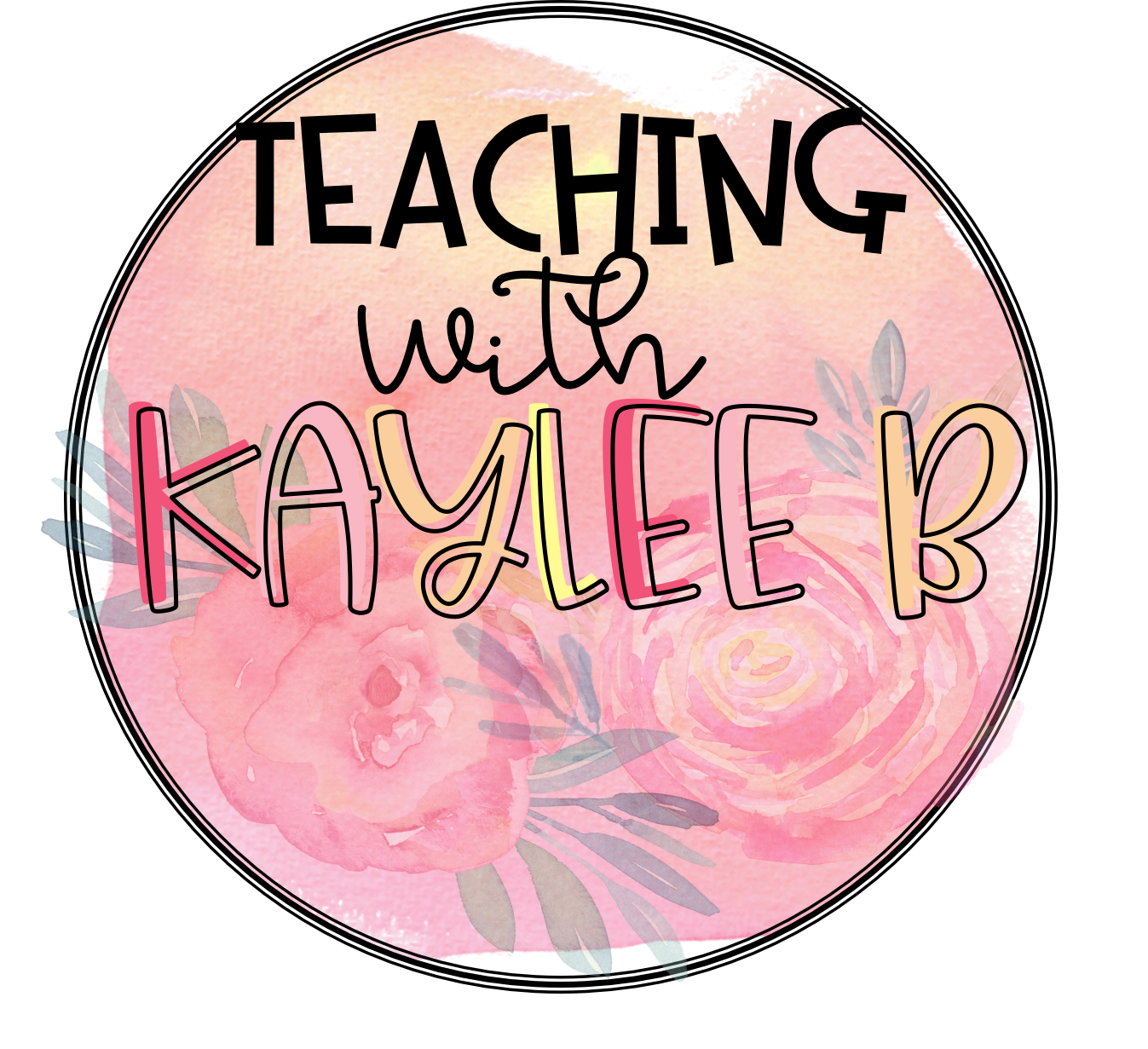When it comes to how to teach measurement in 2nd grade, it’s actually a really fun topic! It’s very hands-on and practical for students. Once students nail how to learn measurement, they want to pick up a ruler and start measuring everything!
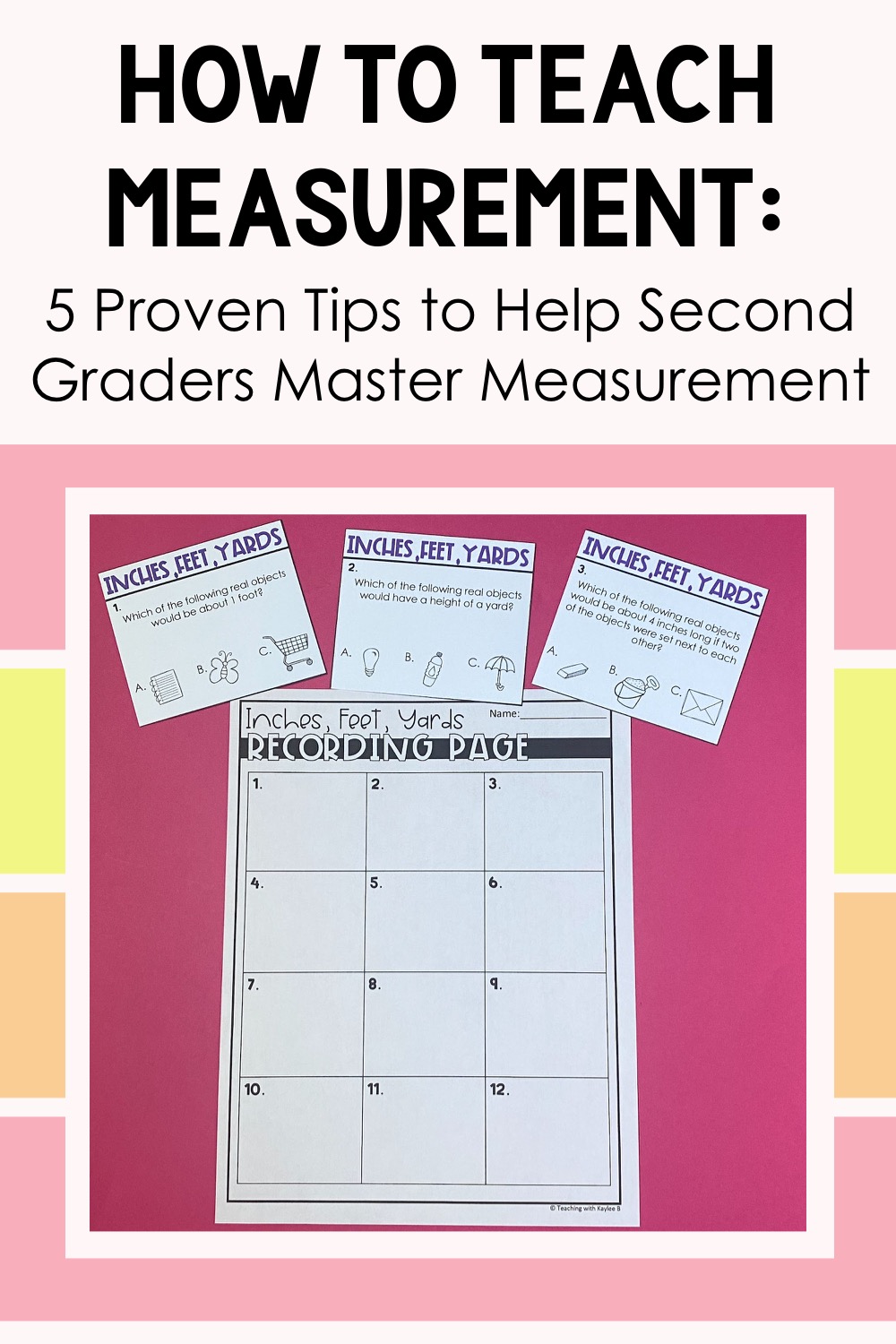
I’m sharing my best tips on how to teach measurement to 2nd graders.
I would even have students ask if they could measure things in our classroom when they finished their work early. It’s real world math that students will use their whole lives. They absolutely love our measurement lessons.
Over my years of teaching 2nd grade, I’ve found 5 tips on how to teach measurement effectively. These tips help students understand the units, avoid common mistakes, and get the practice they need to be successful.
So let’s get into my best 5 tips for how to teach measurement.
How to Teach Measurement
Have Students Find Objects That Match the Unit
When I first teach a new unit of measurement, I show students an object about that length and then I have them look around the classroom and find objects that length. It’s like a fun scavenger hunt!
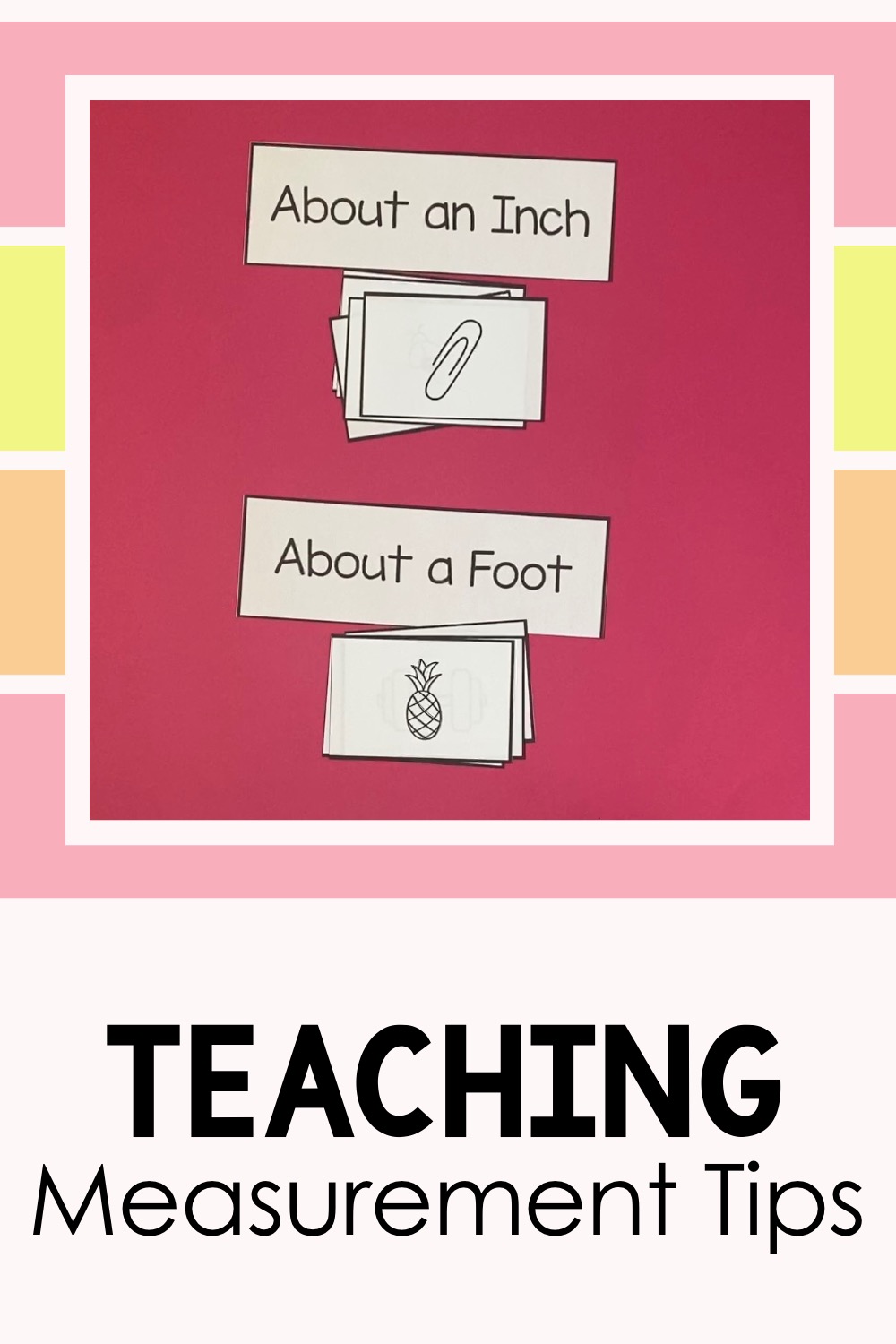
When it comes to how to learn measurement, let students find objects that equal units in your classroom.
So here are some examples on how this could look.
I show my students an inch on a ruler. Then I put a paper clip up to the inch to show students that a paper clip is about an inch. After that I have students look around the classroom and find objects that are about that long. Then they tell me the object, I put the paper clip up next to it and confirm if it is about that length or not.
Then I will show students that a ruler is 12 inches or a foot. I show them how a piece of paper is about a foot long by putting it up to the ruler. Then students search the classroom for objects that are about a foot.
I do the same with yards. For my object that is about a yard, I use the umbrella I take out on recess duty when it is raining.
I even do this process when it comes to how to learn metric measurements. A ones base ten block works great for centimeters. I use the same umbrella for meters as I used for yards.
When students get the hang of this, I may ask them what is an object that is about 2 inches long. I tell them to picture 2 paper clips lined up by each other. This helps them estimate length. Then I give them an object and I have them tell me how many inches they think the length is.
I want to give my students more practice with this, so I give them some fun measurement activities that get them practicing estimating lengths.
One is a scoot activity. I tape task cards around my classroom with different objects on them. Students go around to the different cards with their recording sheet. They read the object and then write down if that object is about an inch, foot, or yard. For example, the first card says “basketball.” Students would think, “is a basketball about an inch, a foot, or a yard?” They would write “foot” down on their recording sheet.
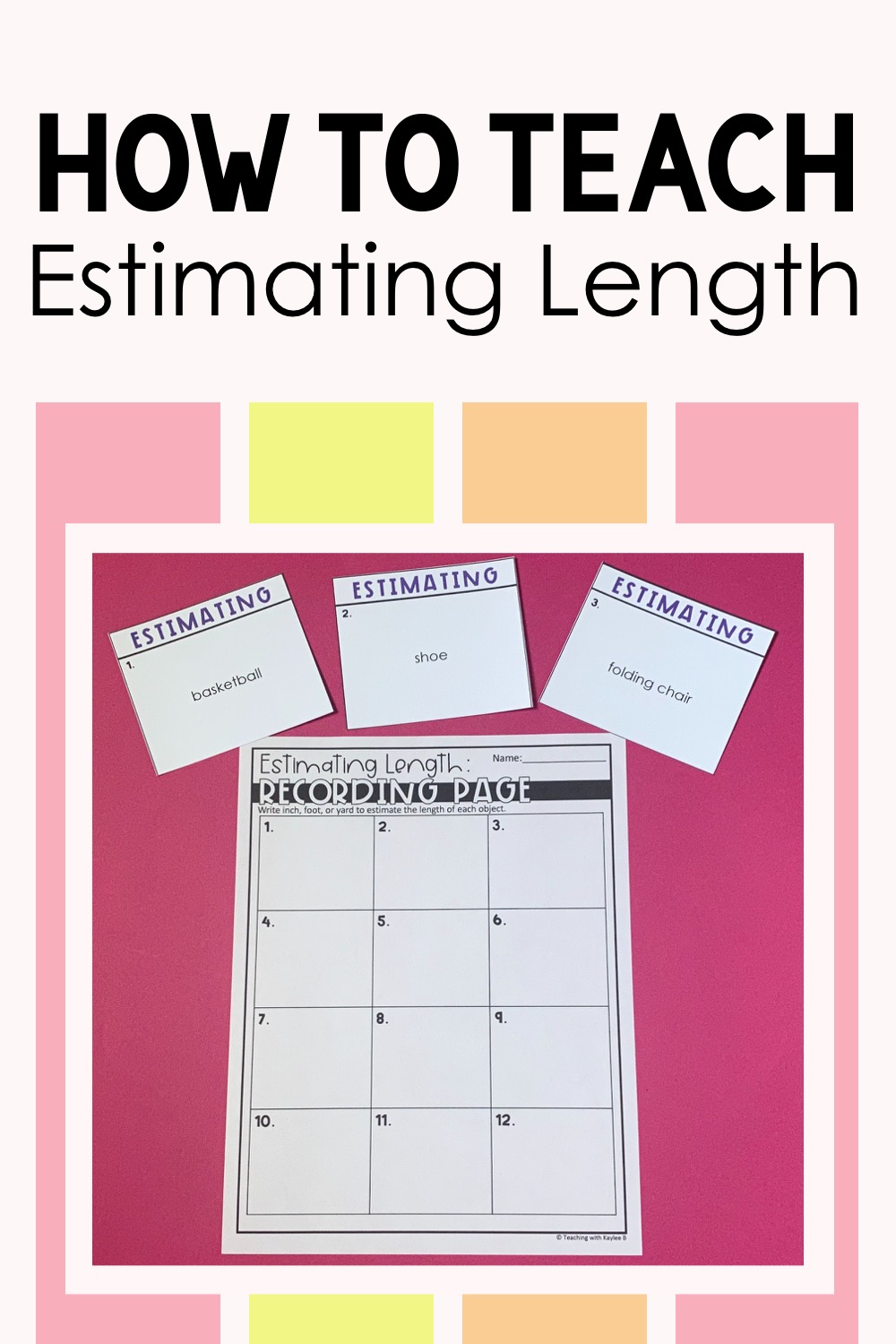
Estimating measurement helps on how to learn measurement units.
Then I have students do a fun sorting activity. They lay out the headers that say “about an inch,” “about a foot,” and “about a yard.” Then they sort their object cards. For example, students would put the card with the acorn on it under the “About an inch” header.
Find the scoot activity, sorting activity, and worksheets I use for my measurement lessons here.
How to Learn Ruler Measurements
Show Common Measurement Mistakes
Now that students understand the different units of measurement, I teach them how to learn ruler measurements. To do this, I model lining up a ruler and measuring an object in inches.
I put an emphasis on the common mistakes that could make their measurement not accurate.
For example, if their ruler isn’t lined up at zero, then the measurement may be off. Or if their rule isn’t lined up straight, their measurement is going to be off. I model making these mistakes in a very silly way and students love to laugh at me. It helps them avoid these common measurement mistakes!
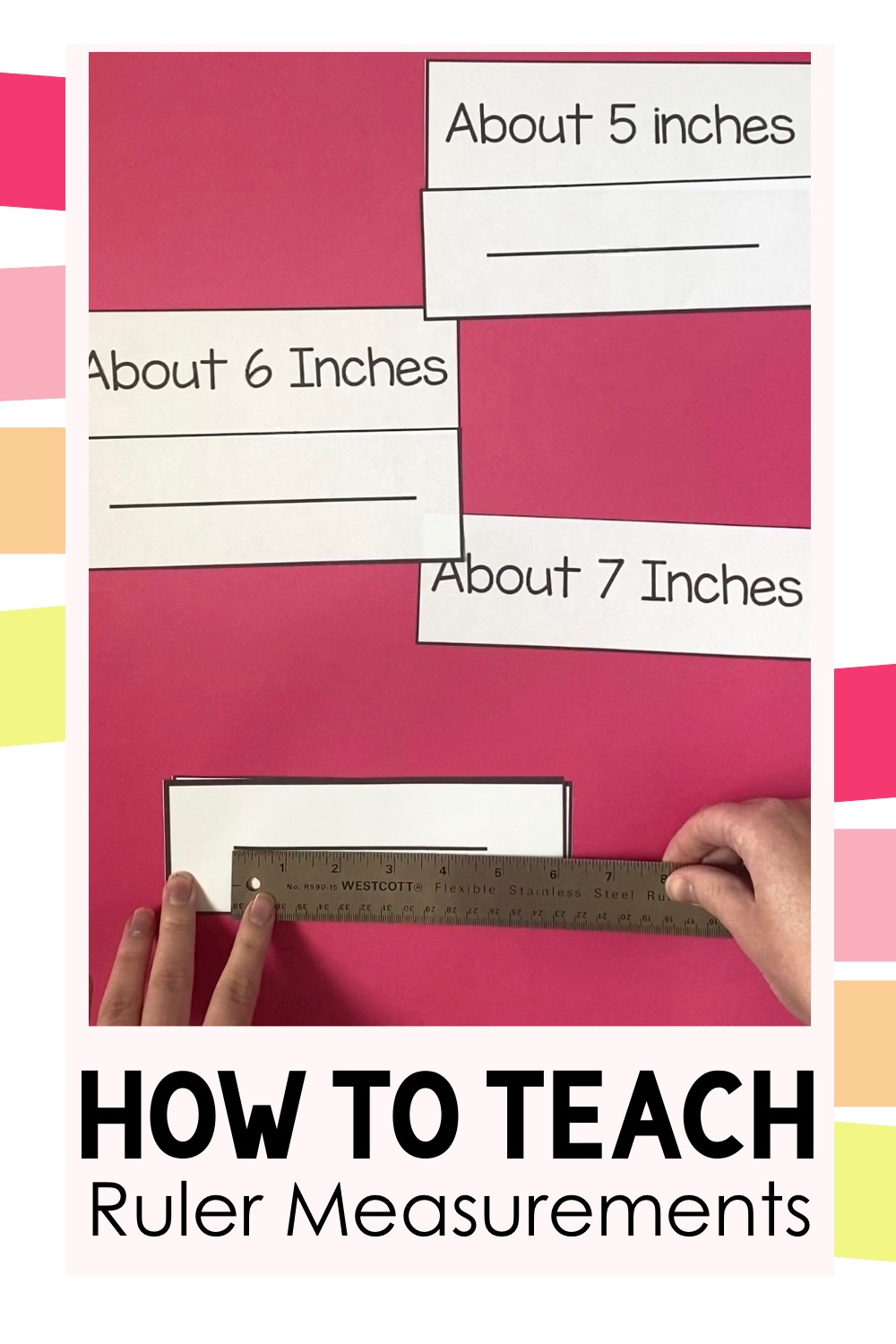
Show common mistakes for best instruction when it comes to how to learn ruler measurements.
At this time, it’s also important to show the halfway point between inches because not every object they measure will be exactly on an inch. If the object is below the halfway mark, use the lesser number. You’ll use the greater number if the object is at the halfway mark or past.
You’ll follow this process with feet, yards, centimeters, and meters.
After teaching students how to measure with inches and centimeters, I like to get them extra practice with scoot activities and sorting activities.
For the scoot activity, I tape up task cards that have different lengths of lines. Students take their ruler and recording sheet to the different task cards around the room. They measure the line and then record their answer. I like to set out an answer key so that students can check their work and get immediate feedback.
For the sorting activity, students set out the header pieces. These say things like “about 4 inches,” “about 5 inches,” and so on. Students measure the lines on the cards and then sort the lines depending on their lengths.
Find these measurement activities here.
Measure Together as a Class When Needed
If your classroom is like mine, then chances are you only have one yard stick and one meter stick. So for those lessons where you teach how to measure using those units, what are you supposed to do?
I just measure those together as a class. I might have students tell me exactly what to do to measure. So I may have students come up in front of the class and measure.
You just have to make it work and that’s okay! Students will continue to learn and practice measurement each school year.
Practice Common Numbers That Come Up With Measurements
Now what if students are measuring an object in inches or centimeters and the object is longer than the ruler they are using?
I show students how to put their finger at the end of the ruler and line it back up.
But this means they are going to need to add. So before this lesson I like to practice common numbers that come up with measurements. Like 12+12 or 30+30. I also review 2-digit addition strategies students can use when they need to add numbers together. Learn about the strategies I teach my students in this blog post here.
Get Lots of Hands-On Practice
Like I mentioned before, students love our measurement unit because it is so hands-on. So make sure to get your students plenty of hands-on practice so that they can master measurement.
Something I noticed about our main curriculum is that it really didn’t provide students with enough practice.
So, I started to set out common school supplies like scissors, markers, books, and staples to have my students measure after we finished our normal curriculum lesson for the day.
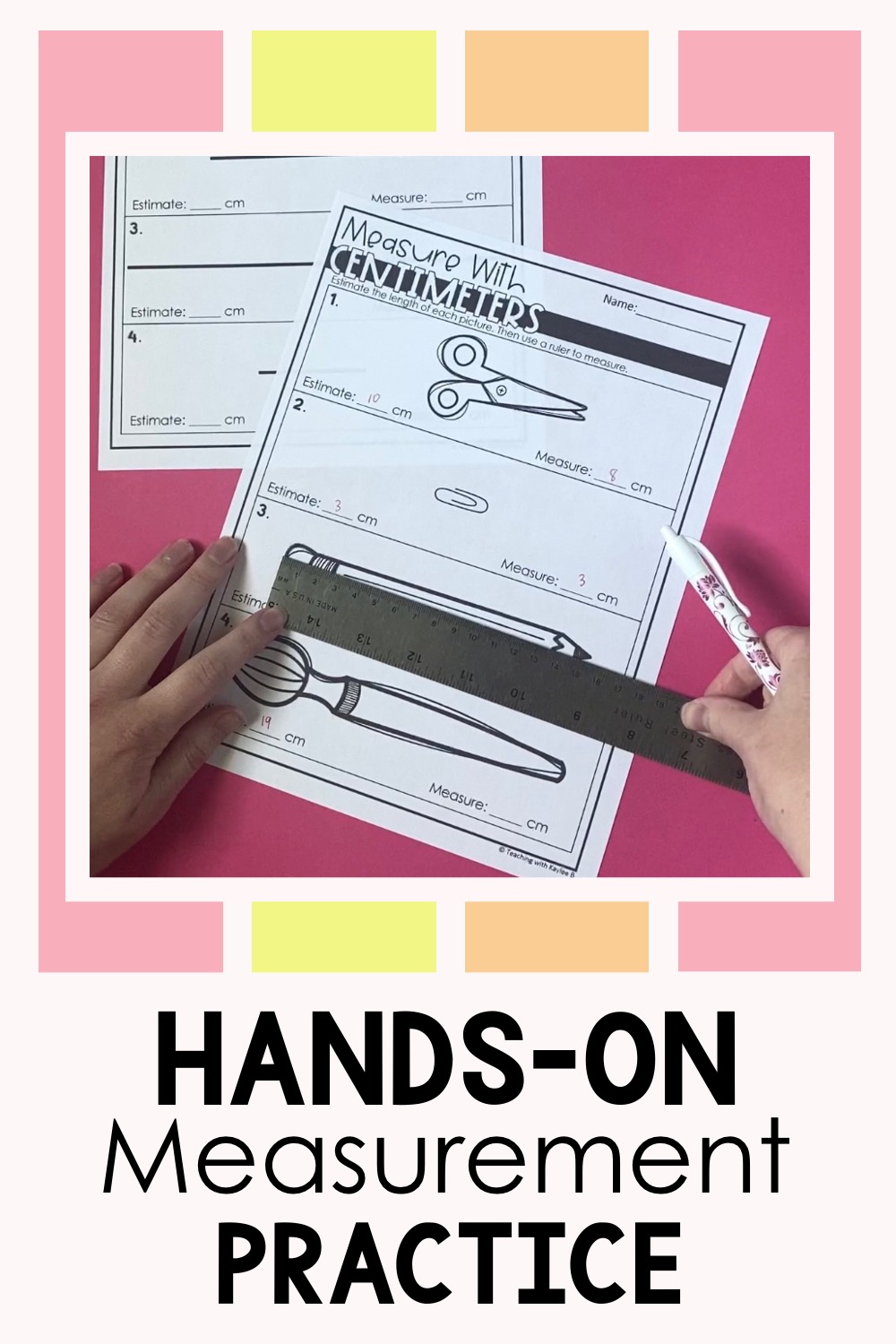
Get students hands-on measurement practice in your measurement lessons.
Don’t want to mess with the hassle of setting out all these supplies? I have worksheets with clipart of these school supplies that you can have students measure instead. Find my measurement worksheets here.
I actually teach 8 different measurement lessons. Each lesson I have my students do a different scoot activity and sorting activity. These make the lessons interactive, hands-on, and engaging. Find all of my measurement materials here.
I hope this blog post has given you more confidence when it comes to how to teach measurement. These tips have helped my measurement lessons run more smoothly and have brought more understanding to my students when it comes to how to learn measurement.
After I teach students how to measure, I teach them how to solve word problems involving measurement. Find my Measurement Word Problem Resources here.
Find all of my Data and Measurement resources here.
